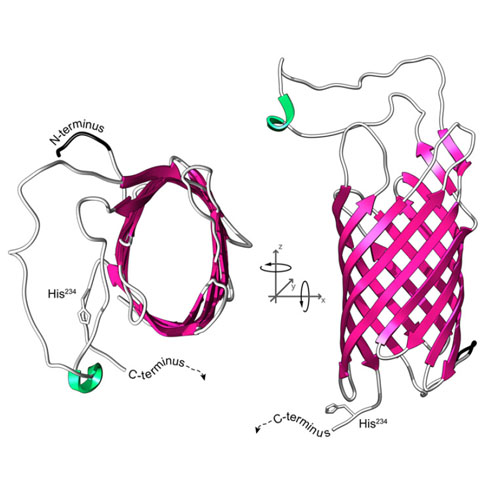OEP40: a Regulated Glucose-Permeable, β-Barrel Solute Channel in the Chloroplast Outer Envelope Membrane
23-Jun-2016
THE JOURNAL OF BIOLOGICAL CHEMISTRY, VOL. 291, NO. 34, pp. 17848–17860, DOI 10.1074/jbc.M115.712398
JBC, online article
Chloroplasts and mitochondria are unique endosymbiotic cellular organelles surrounded by two membranes. Essential metabolic networking between these compartments and their hosting cells requires the exchange of a large number of biochemical pathway intermediates in a directed and coordinated fashion across their inner and outer envelope membranes. Here we describe the identification and functional characterization of a highly specific, regulated solute channel in the outer envelope of chloroplasts, named OEP40. Loss of OEP40 function in Arabidopsis thaliana results in early flowering under cold temperature The reconstituted recombinant OEP40 protein forms a high conductance β-barrel ion channel with subconductant states in planar lipid bilayers. The OEP40 channel is slightly cation selective PK+/PCl- ≈ 4:1 and rectifying (←i/ →i ≡ 2) with a slope conductance of Gmax ≡ 690 pS. The OEP40 channel has a restriction zone diameter of ≡ 1.4 nm and is permeable for glucose, glucose-1-phosphate, glucose-6-phosphate but not for maltose. Moreover, channel properties are regulated by trehalose-6-phosphate, which cannot permeate. Altogether, our results indicate that OEP40 is a "glucose-gate" in the outer envelope membrane of chloroplasts, facilitating selective metabolite exchange between chloroplasts and the surrounding cell.











